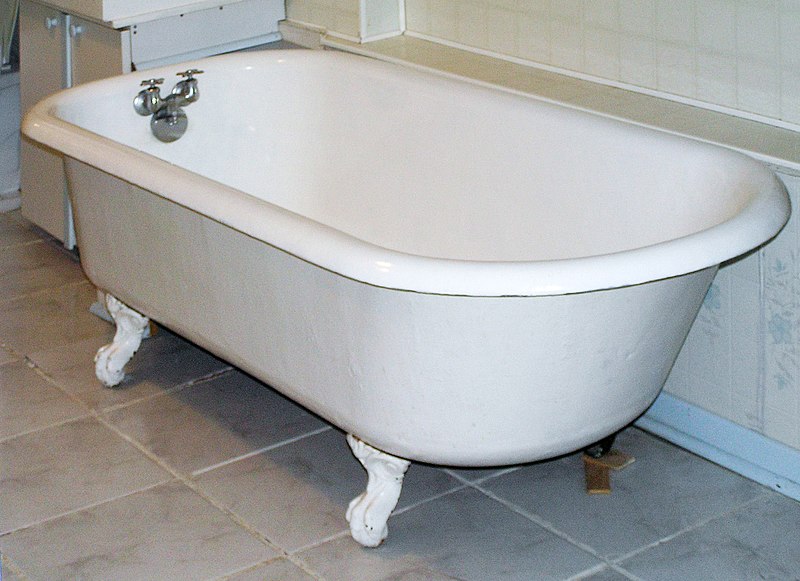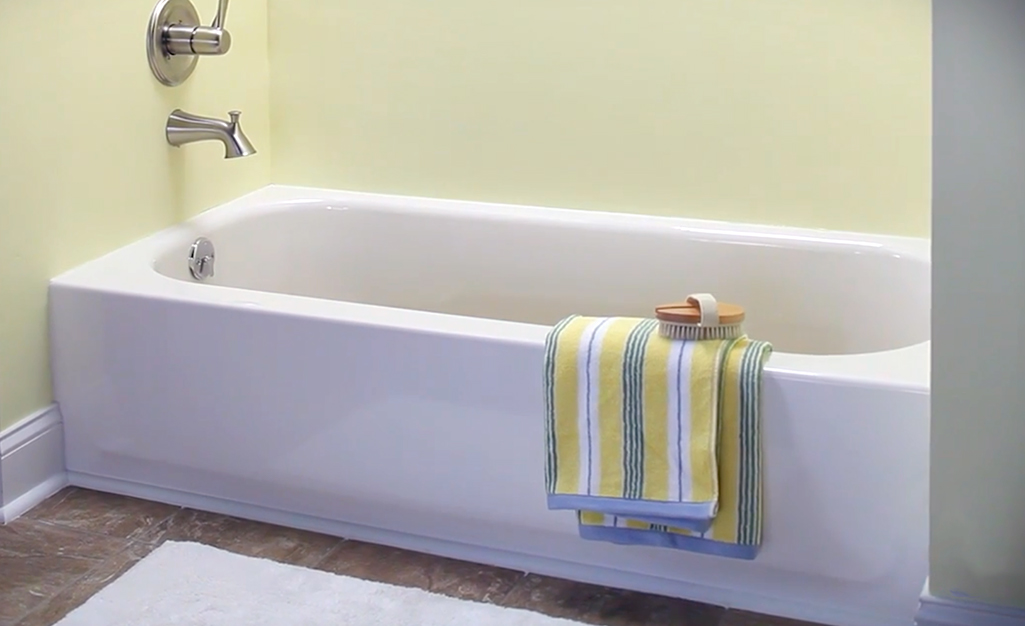The article author is making a few good points regarding Installing A Bathtub as a whole in the content underneath.

Mounting a bathtub isn't precisely rocket science, however it does call for solid plumbing, woodworking, and often, tiling abilities. Replacing an old bath tub with a new one is likewise a reasonably challenging task. If the old tub is easily obtainable, the project can relocate speedily; if you have to open up a wall to eliminate the old bathtub and position the brand-new bathtub, the task is a lot harder. In either instance, the project is within a house handyman's abilities, although you will need an assistant to vacate the old tub as well as embeded in the new one. Ensure you have actually certified yourself for the task as well as fit attempting it. Instead of employing a service provider to take over a halfway-completed job, it is far better to take into consideration using one before you begin. Possibilities are you might require a professional plumber to make tube connections.
This post will certainly assist you mount a brand-new bathtub in your restroom if you have actually currently acquired a brand-new tub and don't need to alter the setup of your previous water pipes.
Your tools and material checklist must make up the following:
Removing Old Taps
If you need to replace old taps with new ones as a part of your installation, then the first thing you ought to do is detach the water system. After doing so, switch on the faucets to drain pipes any type of water staying in the system. The procedure of eliminating the existing taps can be rather troublesome because of the limited gain access to that is commonly the situation.
Utilize a basin wrench (crowsfoot spanner) or a tap tool to undo the nut that connects the supply pipes to the faucets. Have a towel all set for the continuing to be water that will certainly originate from the pipes. Once the supply pipes have been gotten rid of, make use of the very same device to loosen the nut that holds the taps onto the bath/basin. You will require to quit the solitary taps from turning during this procedure. As soon as the faucets have been removed, the holes in the bath/basin will need to be cleansed of any type of old sealing compound.
Prior to going on to fit the brand-new taps, compare the pipe links on the old faucets to the new taps. If the old faucets are longer than the brand-new taps, then a shank adapter is needed for the brand-new taps to fit.
Fitting New Touches
If the tails of the brand-new taps are plastic, after that you will certainly need a plastic connector to stop damages to the thread. One end of the connector fits on the plastic tail of the tap and the various other end supplies a connection to the existent supply pipelines.
If you need to fit a monobloc, then you will certainly need decreasing couplers, which connects the 10mm pipeline of the monobloc to the conventional 15mm supply pipe.
Next off, position the tap in the placing hole in the bath/basin ensuring that the washing machines are in place in between the tap and also the sink. Safeguard the faucet in position with the producer provided backnut. As soon as the faucet is securely in place, the supply pipelines can be linked to the tails of the taps. The faucets can either be linked by using corrugated copper piping or with regular faucet connectors. The previous kind ought to be connected to the faucet ends initially, tightening up only by hand. The supply pipelines can later on be connected to the various other end. Tighten up both ends with a spanner after both ends have been attached.
Setting up the Bathtub
Making use of the two wood boards under its feet, put the bathtub in the called for setting. The wooden boards are practical in evenly spreading out the weight of the tub over the area of the boards rather than focusing all the weight onto 4 little factors.
The next objective is to make sure that the bathtub is leveled all round. This can be attained by checking the level as well as readjusting the feet on the bathtub till the spirit level checks out degree.
To install faucets, fit all-time low of the furthest adaptable tap port to the ideal supply pipe by making a compression join; after that do the exact same for the various other tap.
Turn on the water supply as well as examine all joints and new pipework for leakages and also tighten them if required. Fill up the bath tub and likewise examine the overflow outlet as well as the normal electrical outlet for leakages.
Finally, repair the bathroom paneling as defined in the manufacturer's instruction manual. Tiling and also securing around the bathtub ought to wait up until the bath tub has been used a minimum of when as this will certainly settle it into its final setting.
Planning for the Installation
Firstly, the supporting frame supplied with the bathroom needs to be fitted (if called for) according to the manufacturer's instructions. Next, fit the faucets or mixer to the tub. When suitable the faucet block, it is important to ensure that if the tap includes a plastic washing machine, it is fitted in between the bathroom and also the faucets. On a plastic bathroom, it is also reasonable to fit a sustaining plate under the faucets unit to prevent strain on the bathtub.
Fit the flexible tap ports to the bottom of the two taps using 2 nuts as well as olives (in some cases supplied with the bathtub). Fit the plug-hole outlet by smearing mastic filler round the sink electrical outlet hole, and after that pass the electrical outlet with the hole in the bath. Utilize the nut supplied by the producer to fit the plug-hole. Analyze the plug-hole outlet for an inlet on the side for the overflow pipe.
Next, fit the end of the flexible overflow pipe to the overflow electrical outlet. Afterwards, screw the pipeline to the overflow face which need to be fitted inside the bathroom. Make certain you utilize all of the supplied washers.
Connect the catch to the bottom of the waste outlet on the tub by winding the thread of the waste outlet with silicone mastic or PTFE tape, as well as screw on the trap to the outlet. Link the bottom of the overflow tube in a similar manner.The bath ought to now be ready to be fitted in its last placement.
Tiling Around the Bath tub
In the location where the bathroom satisfies the ceramic tile, it is required to seal the joins with a silicone rubber caulking. This is essential as the fitting can move enough to crack a rigid seal, creating the water to pass through the wall surface in between the bath and also the tiling, leading to complications with wetness and also feasible leakages to the ceiling below.
You can choose from a variety of coloured sealers to assimilate your components as well as fittings. They are sold in tubes and also cartridges, and also are capable of sealing gaps approximately a size of 3mm (1/8 inch). If you have a larger gap to fill, you can load it with spins of soaked paper or soft rope. Keep in mind to always load the bath tub with water before sealing, to permit the activity experienced when the tub is in usage. The sealer can break fairly very early if you do not take into consideration this activity prior to sealing.
Conversely, ceramic coving or quadrant tiles can be made use of to edge the bathroom or shower tray. Plastic strips of coving, which are easy to use as well as cut to dimension, are also conveniently available on the marketplace. It is recommended to fit the ceramic tiles using waterproof or waterproof sticky and cement.
Bathtub Installation
How Important Is A Bathtub To Your Home?
High-quality baths, showers, and other bathroom updates are necessary when considering a smart investment in your home. It’s a room that you go to every day and one that is constantly being used by guests.The bathroom is one of the top trafficked rooms in a home and also one of the most valuable in terms of home resale.
Install Piping Before Tub
You will be using your existing drain and waste vent system, but pipes required include the hot and cold water supply lines and a pipe leading to a shower head. A mixing valve and shower head are also needed. Air chambers may be required.
Position the Tub
Lower the tub into place so that the continuous flange fits against the wall studs and rests on 1’x4' or 2’x4' supports. Anchor the tub to the enclosure with nails or screws inserted through the flanges into the studs.
NOTE: Remember, bathtubs and shower stalls may require support framing. A bathtub filled with water is extremely heavy, so check building codes and framing support before installing the tub.
Assemble Drain Connections
Assemble the bathtub drain connections by connecting the tub overflow with the tub drain above the trap, not beyond it. The trap will have a compression fitting that screws over the arm of the overflow assembly.
Place a Pipe For the Shower Head
First, locate a brass female threaded winged fitting and attach it to a framing support via a screw or a nail. Then run a pipe up the wall for the shower head. Sweat or solder the other side of the brass fitting to the top of the pipe.
Attaching Hot and Cold Water Lines
Attach your water lines for both hot and cold by sweating these directly into the hot and cold ports of the mixing valve. The mixing valve will be how water enters the tub’s system, not by the pipes themselves.
Install the Spout
Extend a piece of 1/2 inch pipe, or whichever length is specified in the manufacturer’s instructions, for the tub spout. Sweat on a male threaded fitting at the end of the pipe or use a brass nipple of the proper length and a 1/2 inch cap.
NOTE: At this point you should have your rough-in plumbing work inspected before proceeding further.
Check For Leaks
Restore the water pressure and check the drain connection and the supply pipes for any sign of leaking.
estore the Bathroom Wall
Replace the wall with moisture-resistant drywall as a base for your wall covering. Seal the joints between the wall and your new tub with silicone caulk as protection against water seepage.
https://www.berkeys.com/2016/12/02/bathtub-installation-dallas/

I am very fascinated with Installing A Bathtub and I hope you enjoyed reading my blog post. Are you aware of someone else who is enthusiastic about the niche? Why not promote it. Thank you so much for taking the time to read it.
Information